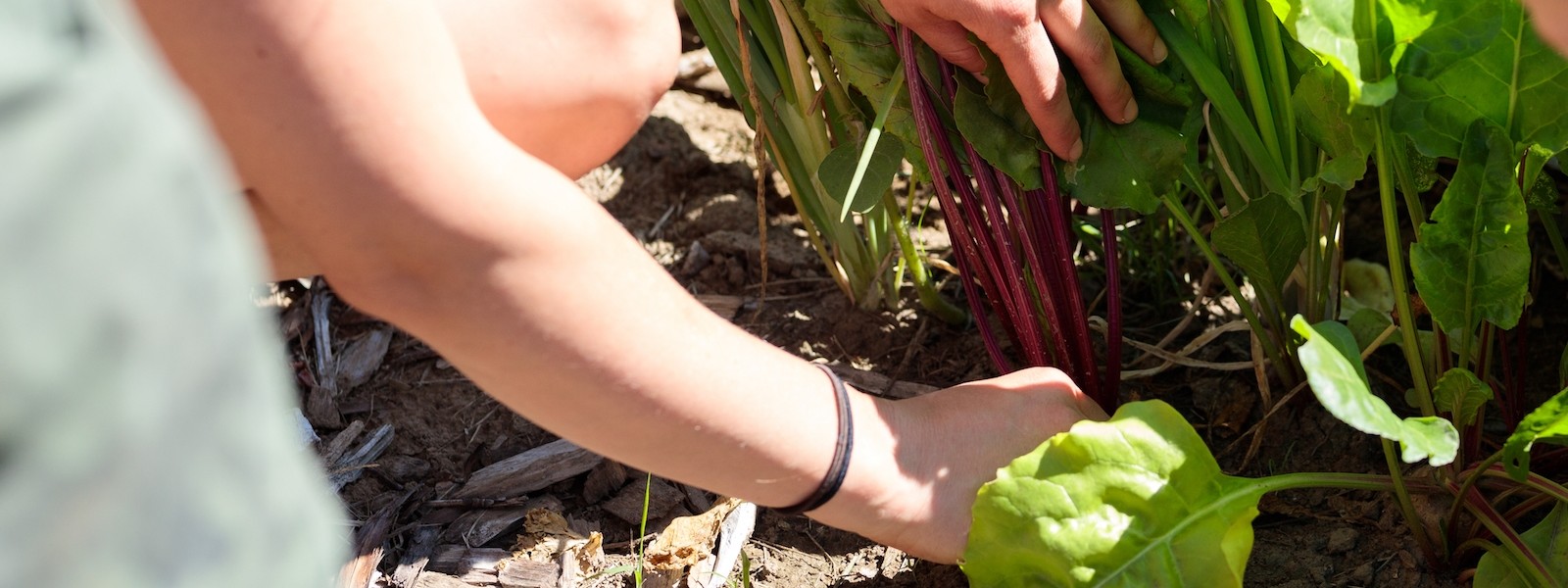Companion Planting
Companion plants are those pairs or groups of plants that complement and do not compete with one another through their life cycles. They also provide an attractive habitat for desirable garden critters such as beneficial insects, frogs, toads, spiders, or birds.
A great book on companion planting is Carrots Love Tomatoes by Louise Riotte.
Some plants can extract or accumulate certain nutrients from the soil and make them more available for other plants. An example of this companion relationship is intercropping clover or other legumes with corn. Legumes fix nitrogen in soil, and corn is a heavy nitrogen feeder.
Some plants can be grown closely together because their needs do not overlap, so they will not compete for nutrients or space. An example of this relationship is carrots intercropped with tomatoes as they do not crave the same nutrients, do not share pests, and their root structures are different and so do not compete for space. Another example of partners that also complement one another is comfrey grown beneath apple trees.
Some plants attract beneficial insects with their smell, their flower shape, color, size, and the timing of their bloom. Here is a list of some favorites to attract beneficials to the garden:
- Cilantro attracts tachinid fly
- Dill attracts hover flies, predatory wasps, honey bees; trap crop for tomato hornworm
- Echinacea (or Purple Coneflower) attracts butterflies and bees
- Fennel attracts ladybugs
- Horseradish an excellent perennial vegetable that attracts beneficial wasps and beetles
- Sunflower attracts butterflies and bees
- Yarrow attracts predatory wasps, ladybugs, and hover flies
Some plants deter pests:
- Alliums confuse carrot fly and protect against slug damage
- Basil wards off whitefly and tomato hornworm when planted amongst tomatoes
- Lavender confuses pests
- Lovage helps most plants, tastes like celery and fennel
- Marigold repels nematodes underground, and leaf hoppers above the ground
- Nasturtium attracts aphids away from beans
- Nettles attract cabbage white butterflies, keeping them away from brassica crops (can be a difficult garden companion as the leaves will sting you; they are edible, though, and taste like spinach)
- Spearmint repels aphids and ants. CAUTION: can be problematic as it spreads by root quite easily
Some plants attract problem insects and can be strategically placed in the garden to trap these pests. Once you have attracted them you can know the insects off in to a bag or jar of soapy water, or vacuum them up with a hand held vacuum. Here are a few examples:
- Dill is a trap crop for tomato hornworm
- Nasturtium is a trap crop for aphids
- Radishes, mustards and other brassicas are trap crops for flea beetles
- Wild Evening primrose attracts and is a trap crop for Japanese beetles
Interested in learning more? The Grower’s Library at Johnny’s Selected Seeds may have the information you’re looking for.

